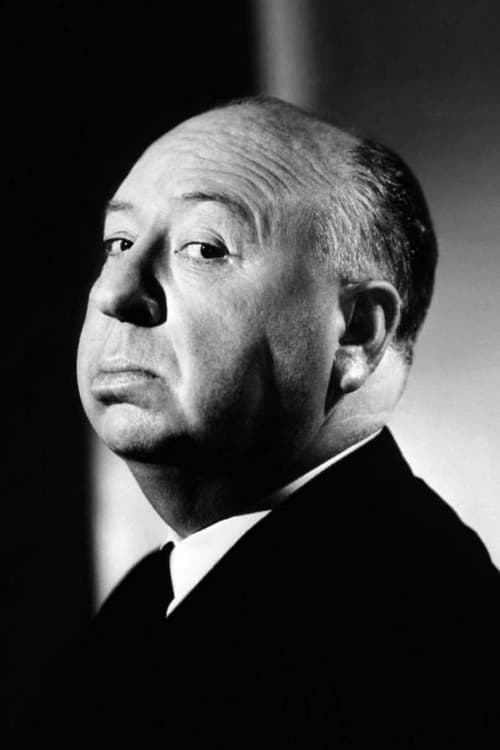Discover
-

Alfred Hitchcock
Producer -

Robert Burks
Director of Photography -

Rudi Fehr
Editor -

Moss Mabry
Costume Design -

George James Hopkins
Set Decoration -

Frederick Knott
Theatre Play -

Dimitri Tiomkin
Original Music Composer -

Mel Dellar
Assistant Director
-
 talisencrw
6/23/2021 3:57:50PM
talisencrw
6/23/2021 3:57:50PM
I used to consider this second-tier Hitchcock, but a re-watch proved to me just how excellent the script and directing were, as well as how stellar and underrated both Grace Kelly and Ray Milland tend to be, at least presently, three generations after the fact. The suspense is tied tighter than the proverbial drum. Needless to say, to this day, I never keep scissors on top of my desk anymore...
-
 katch22
7/26/2021 8:13:47PM
katch22
7/26/2021 8:13:47PM
It is very obvious that this was written as a play. It is very heavy on exposition to cover almost all activities that take place outside of the "essentially" one room of the apartment. Nothing wrong with that, but it gives the film a different feel. This is more of an intellectual exercise than a action-packed murder mystery. It might have been better to have written Tony as a chess master than a former tennis star. It would have been a bit more in keeping with his plots and strategies. Even the action in the actual murder scene is "play-like" - a rather exaggerated initial reaction to being stabbed followed by the more drawn out dying, dying, dead finale. Each time I watch this movie, I'm always struck by the strange idea that apparently every citizen is required to account for every pound note that they acquire and spend? I have no idea if this was remotely true in England in 1954, but it seems odd and unlikely. It's not critical, but it is jarring when they talk about it, because it seems so unnatural. This is a great movie and a great story. However, the over-head camera angles for some scenes seems a strange choice, and Grace Kelly is clearly under-utilized in this role. Margot is such a compliant character that it seems very unlikely that she would engage in an extra-marital affair and then be so nonchalant about being with her former lover together with her husband. While my criticisms might give the impression that I disliked the movie, these are only minor flaws in a superior film. Hitchcock is able to convey so much through an actor's mere glance - it is incredible!
-
 John Chard
5/16/2024 3:22:20PM
John Chard
5/16/2024 3:22:20PM
No, I'm afraid my murders would be something like my bridge: I'd make some stupid mistake and never realize it until I found everybody was looking at me. Middle tier Hitchcock it may be, by his own admission, but it's still one of the finest mystery thrillers around. Ray Milland plays Tony Wendice, a former tennis player married to Grace Kelly's Margot, who is the source of his wealth. Fearing his lifestyle is about to come to an end due to her dalliances with American mystery writer, Mark Halliday (Robert Cummins), Tony hatches a plan to have her murdered by an old acquaintance whom he has over a barrel with blackmail. However, the plan backfires and a whole new strategy is needed to save Tony from suspicion. Based on the popular and successful play by Frederick Knott (who adapts for the screenplay here), Dial M For Murder was a film Hitchcock had little time for. In fact, having already started work on Rear Window, Hitch treated Dial M For Murder as a jobbing assignment. His mood was further darkened by Jack Warner's insistence that the film be shot in 3D, with all the camera restraints that such a production brings. Perhaps unsurprisingly though, the restraints and general mood of the director brought about very pleasing results. Choosing to go for a claustrophobic single set shoot, Hitchcock resisted the urge to launch things around for 3D effects, instead he used the process to highlight props and angles of the Wendice home. His use of colours here first rate, particularly around his new found favourite actress, Grace Kelly. Having never seen the 3D version (who has I wonder?) I can't say what impact, if any, the gimmick had. But regardless of Hitch's grumblings and general disdain towards the film, he rose to the challenge by challenging himself and actually produced a fine and technically sound picture. Ray Milland is icy cold yet debonair, while John Williams as Chief Inspector Hubbard strides in and walks off with the film. Kelly is adequate enough, it's her least effective turn for Hitch, so early in her career, she was a bit free with her physical love on the set (source "A Life in Darkness and Light"), but this highly appealed to (and amused) Hitch and he of course would use her for better rewards post this production. Sadly Cummings is awfully bland and threatens to lose the film momentum when things start to spice up in the last quarter. Hugely entertaining picture though, one that is ripe with characterisations and of much interest to Hitchcock purists in how he works around the 3D format for his own filmic senses, Dial M For Murder holds up well today as a disquieting mystery thriller. 8/10







Alfred Hitchcock
Banquet Member (uncredited)Grace Kelly
Margot WendiceRay Milland
Tony WendiceJohn Williams
Chief Inspector HubbardAnthony Dawson
Charles SwannMartin Milner
Policeman Outside Wendice Flat (uncredited)Robert Cummings
Mark HallidayBess Flowers
Woman Exiting Ship (uncredited)